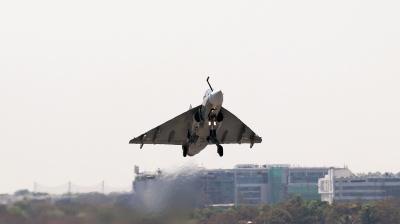New technique to make prosthetic limbs feel more natural
The MIT team set out to recreate these agonist-antagonist muscle relationships.
MIT researchers, including one of Indian origin, have developed a new surgical technique that could allow prosthetic limbs to feel much more like natural limbs. Through coordination of prosthetic limb, existing nerves, and muscle grafts, amputees would be able to sense where their limbs are in space and to feel how much force is being applied to them.
"We are talking about a dramatic improvement in patient care," said Hugh Herr, professor at Massachusetts Institute of Technology (MIT) in the US. This type of system could help to reduce the rejection rate of prosthetic limbs, which is around 20 per cent.
"For almost any amputation scenario, as long as we have a little bit of the healthy nerve left, we can take that and put it into regenerative muscle grafts," said Shriya Srinivasan, a graduate student in the Harvard-MIT Programme in Health Sciences and Technology (HST). "We can harvest these muscle grafts from almost anywhere in the body, making this applicable to a large number of cases ranging from trauma to chronic pain," Srinivasan said. In the study, published in the journal Science Robotics, researchers demonstrated in rats that their technique generates muscle-tendon sensory feedback to the nervous system, which should be able to convey information about a prosthetic limb's placement and the forces applied to it. They now plan to begin implementing this approach in human amputees.
During a conventional limb amputation, muscles are severed in a way that cuts off a key relationship that normally helps people control their limbs and sense where they are in space. Most muscles that control limb movement occur in pairs known as agonist-antagonist pairs, such that one muscle stretches when the other contracts. The agonist-antagonist muscle relationship is also what allows people to independently control position and stiffness at their limb joints.
The MIT team set out to recreate these agonist-antagonist muscle relationships. In many amputees, the nerves that send signals to the amputated limb remain intact. The researchers decided to take advantage of those nerves by connecting them to muscle pairs grafted from another part of the body into the amputation site. These grafts, which would be about 4 centimetres by 1.5 centimetres in humans, consist of a pair of muscles that work together just like natural muscles.
The researchers tested the muscle grafts in rats and found that when the rats contracted one muscle of the pair, the other muscle would move in the opposite way and send sensory information back to the brain.


















